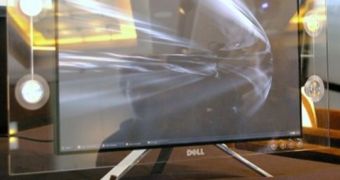PC manufacturer Dell has been constantly pushing the DisplayPort (the DVI interconnect replacement) in all its new products, ranging from notebook PCs to PCs and monitors. Although DisplayPort is the latest technology when it comes to interconnectivity, there's only one problem: users who have older computing systems will get locked out.
The DisplayPort technology is just new; it does not offer any real price (or functionality) advantage over the already-adopted HDMI interface, that is already implemented in a large offering of consumer electronics devices. However, Dell is rumored to have decided upon launching DisplayPort-based monitors, that will not be able to get connected to older, pre-DisplayPort graphics cards. Given the fact that DisplayPort devices have just emerged, all our computers will be useless in conjunction with a Dell monitor. The result is not technology advancement, but rather an ill-fated monopoly.
The DisplayPort interface was shaped by Dell, HP and Samsung back in 2003, and then it seemed a reasonable alternative to the old, analog VGA connector, or to the younger DVI that cannot provide enough bandwidth for nowadays' monitors running at blaring resolutions. The DisplayPort was supposed to be a royalty-free, open standard (unlike the HDMI interface, that needs licensing and royalty payment).
DisplayPort missed that train, and launched at a later time, when the HDMI standard was implemented and popular. IT became the default digital interface, with wide adoption. The DisplayPort interconnect was just late, and its backers should have lived with that and retire it. Instead, it got perfected and promoted until Dell (the most frantic supporter) issued the $1999 DisplayPort-enabled monitor, the 30-inch UltraSharp 3008WFP. Odd enough, the display comes with both DisplayPort link and HDMI interface.
It's true that the DisplayPort's architecture promises a lot, given the fact that it can provide signals for multiple monitors linked in a daisy-chain, as well as integrated USB hubs over a single cable. But there are other technologies that can do the same. DisplayLink, for instance, can drive multiple monitor setups. DisplayPort had its window of opportunity, but it missed it. Force-feeding customers with yet another interconnect will just cause havoc and frustration. Imagine buying a new monitor just to realize that it is not compatible with your home notebook.

 14 DAY TRIAL //
14 DAY TRIAL //